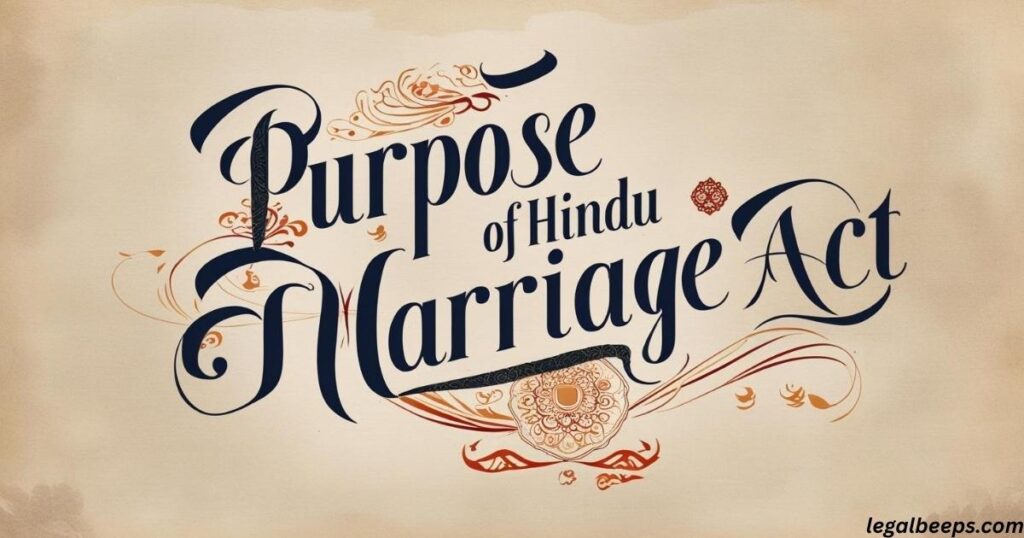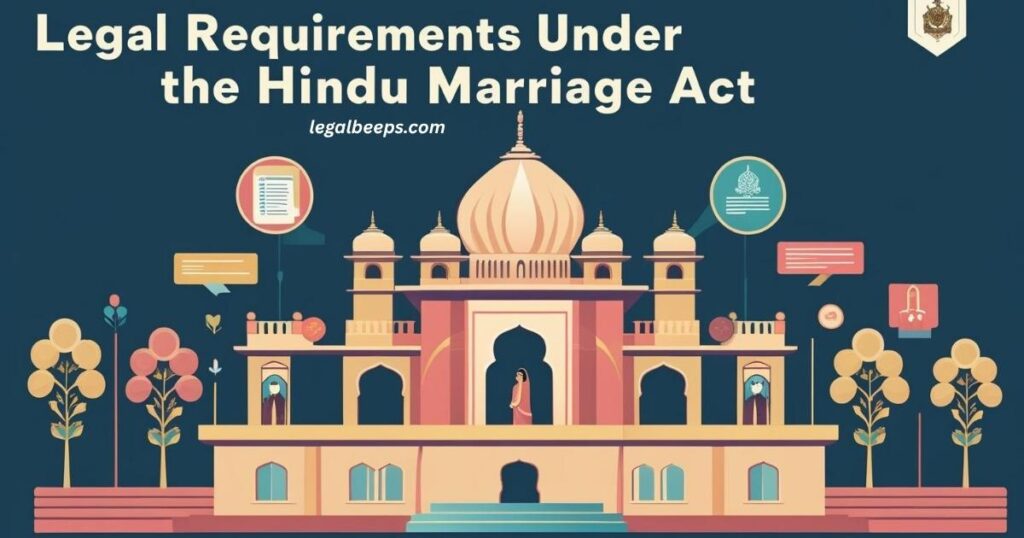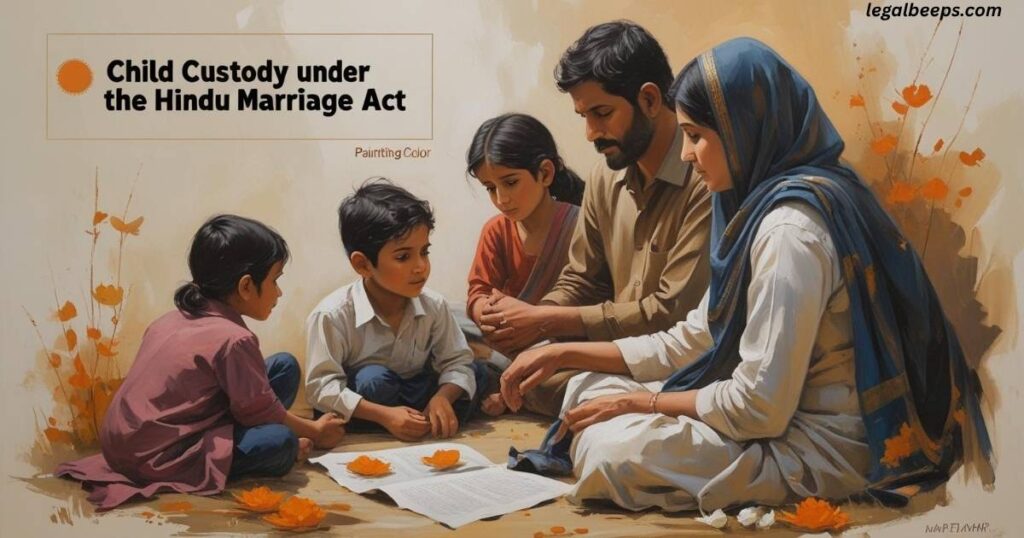The Hindu Marriage Act is a law in India that explains how marriage should happen among Hindus. It was made to protect the rights of both husband and wife. The Act for Hindu Marriage was passed in 1955. The main aim is to give rules for marriage, divorce, and other related matters. It helps ensure that both people in a marriage are treated fairly under the law.
People often ask, what is Hindu Marriage Act and why it was made? The Act for Hindu Marriage, 1955 purpose is to make marriage fair and equal for men and women. The HMA Act gives clear rules about who can marry and what happens if a marriage breaks. It also helps people solve problems like divorce and child support. This law applies to Hindus, Buddhists, Jains, and Sikhs in India. It brings order, protection, and justice to marriage life.
What is Hindu Marriage Act
The Act for Hindu Marriage is a law made in India in 1955. It sets rules for marriage between two Hindus. This law explains who can get married, how marriage is done, and when it can be ended. It helps protect the rights of both husband and wife. It also covers topics like divorce, maintenance, and child custody after a marriage ends.
This law applies to Hindus, Buddhists, Jains, and Sikhs living in India. It makes sure that marriages are done fairly and with consent. The Act for Hindu Marriage also stops child marriage and supports equal rights. Both men and women have the same legal rights under this law. It gives a clear way to solve marriage problems. The goal is to support respect, equality, and peace in Hindu marriages.
Purpose of Hindu Marriage Act

The purpose of the Act for Hindu Marriage, 1955, is to establish legal guidelines for marriage within the Hindu community. It aims to regulate marriages, ensuring that they are legally valid and binding. This law was created to provide equal rights to both husband and wife, protecting their interests and offering a framework for resolving disputes. It also covers issues like divorce and maintenance for both partners.
The Act for Hindu Marriage ensures fairness in marital relationships. It gives clear instructions on the process of marriage, divorce, and separation. The law was designed to protect individuals from unfair treatment, particularly in cases of cruelty or desertion. The Act also addresses the rights of children born within marriage. It promotes equality between men and women, helping safeguard their personal and legal rights throughout the marriage.
Structure of The Hindu Marriage Act
The structure of the Act for Hindu Marriage is simple and clear. It has different sections that talk about marriage, conditions for a valid marriage, and divorce. The Act also explains who can get married under it and what makes a marriage legal. It covers rights and duties of both husband and wife. It has rules about separation, nullity of marriage, and maintenance. The Act includes laws about children born from the marriage too. Each section is made to solve problems related to Hindu marriages.
Overview: Six Chapters and 29 Sections of the 1955 HMA
Chapter I
Chapter I of the Act for Hindu Marriage gives a short title and explains its application. It says the law applies to Hindus, Buddhists, Jains, and Sikhs. It also includes people who follow Hindu customs. This chapter sets the base for the entire Act and helps in understanding who is covered under the 1955 HMA.
Chapter II
Chapter II lays out the conditions for a valid Hindu marriage. It talks about age, mental health, and mutual consent. It also says both partners must not be too closely related. If any rule is broken, the marriage can be challenged. This chapter is important for making sure marriages are legally and socially acceptable.
Chapter III
Chapter III explains how marriages are registered. It shows the importance of keeping records for legal proof. Though registration is not always necessary, it’s encouraged. This chapter helps couples secure official documents. It promotes clarity and helps avoid future disputes. This section is helpful for those who want to keep their marriage legally safe.
Chapter IV
Chapter IV discusses the reasons a marriage can be declared void or voidable. It covers issues like forced marriage, hidden facts, and mental illness. This chapter helps people leave harmful relationships in a legal way. It also protects the rights of individuals who were misled or mistreated. The laws in this part bring fairness and safety.
Chapter V
Chapter V deals with divorce and judicial separation. It lists many grounds for divorce like cruelty, desertion, or adultery. It also talks about mutual consent divorce. This chapter helps people end unhappy marriages lawfully. It protects both partners and ensures that separation happens with legal respect. It is one of the most detailed parts of the Act.
Chapter VI
Chapter VI includes miscellaneous provisions. It talks about penalties, court powers, and rights of children born from invalid marriages. This chapter handles special and rare cases. It ensures that justice is served even when situations are complex. This final part ties all other chapters together and completes the structure of the Act for Hindu Marriage, 1955.
Legal Requirements under the Hindu-Marriage Act

The Act for Hindu Marriage lays down specific legal requirements to ensure that marriages are valid and recognized by law. These requirements include that both parties must be Hindus, and they should be of legal marriageable age, which is 21 years for men and 18 years for women. Both individuals must also have the mental capacity to understand the consequences of marriage and should not be closely related by blood.
Additionally, the Act specifies that both parties must give their consent to marry voluntarily. Forced marriages are not valid under this law. The Act for Hindu Marriage also prohibits marriages between close relatives, as defined under the law. It also mandates that the marriage must be conducted with proper rites and ceremonies. Lastly, the Act ensures that both parties are free from any existing marriage obligations.
Marriage Registration under the Hindu-Marriage Act
Marriage registration under the Act for Hindu Marriage is an important legal process. It helps ensure that the marriage is recognized by the government. The registration is done by submitting necessary documents, including marriage certificates, identity proof, and photographs. Once completed, the marriage is officially recorded. It provides legal benefits, such as inheritance and rights to property, and helps protect both parties involved.
Under the Act for Hindu Marriage, 1955, marriage registration is not compulsory but highly recommended. It makes the marriage legally binding and offers proof of marriage. The process is simple and can be done at a local government office. Couples must fill out the application and provide details about the marriage. This process is essential in case of legal disputes or for changing marital status in official documents.
Grounds for Divorce under the Hindu-Marriage Act
The Act for Hindu Marriage provides specific grounds for divorce to ensure fairness in marriage dissolution. These include adultery, cruelty, desertion, and mental illness. If a spouse has committed these acts, the other can apply for divorce. These grounds also address cases of impotence or when one partner is sentenced to imprisonment. The Act aims to protect the rights of both parties involved in the marriage.
In addition to these, the Act for Hindu Marriage also allows divorce in cases of irretrievable breakdown of marriage. This means if the relationship is beyond repair and both spouses have lived separately for a long period, a divorce may be granted. Other grounds include conversion to another religion or a spouse’s failure to fulfill marital obligations. These legal provisions ensure that individuals can seek a divorce on valid and justifiable grounds under the Act for Hindu Marriage.
Rights and Duties under the Hindu-Marriage Act
Hindu Marriage Actoutlines both the rights and duties of spouses in a marriage. It guarantees the right to live together, the right to equal treatment, and protection from cruelty or mistreatment. It also grants the right to divorce under certain conditions like adultery, cruelty, or desertion. These rights help ensure fairness and protection for both parties in the marriage.
Along with rights, the Act also defines the duties of both husband and wife. They are expected to provide financial support to each other, maintain the family, and live together peacefully. Both spouses are required to treat each other with respect and work together for the welfare of the family. The Act also encourages mutual cooperation in managing household responsibilities and raising children.
Child Custody under the Hindu-Marriage Act

Hindu Marriage Act also addresses child custody in cases of separation or divorce. It prioritizes the child’s welfare above all else. The court determines custody based on factors like the child’s age, gender, and emotional needs. Generally, younger children are placed with their mother, but the father may be given custody depending on the situation. Both parents’ abilities to care for the child are also considered.
In some cases, the Act for Hindu Marriage allows for joint custody or visitation rights. If one parent is deemed unfit, the court will ensure the child is placed with the better guardian. The act aims to maintain the child’s well-being, stability, and happiness. It ensures that the child has a chance for a healthy upbringing even after parental separation or divorce. Each decision is made carefully to prioritize the child’s future.
Read Also: Arnesh Kumar vs. State of Bihar (2014) 8 Scc 273
Marriageable Age under the Hindu-Marriage Act
Under the Hindu Marriage Act, the legal age for marriage is set to protect individuals, especially minors. According to the Act, the marriageable age for a woman is 18 years, while for a man, it is 21 years. These ages ensure that both parties are mature enough to understand the responsibilities of marriage. The law aims to prevent child marriages and promote responsible, informed decisions about relationships.
The Act for Hindu Marriage seeks to safeguard the rights of individuals by establishing these age limits. Marrying before reaching the legal age is considered invalid under the law. This provision helps in protecting young people from exploitation and early marriages. It also aims to promote the overall well-being of individuals and ensures that both parties can enter marriage with full consent and understanding of the commitment involved.
Also Read: Nirbhaya Case Details 2012 : What Happened In Nirbhaya Case?
Marriage Conditions under the Hindu-Marriage Act
Hindu Marriage Act sets clear rules for marriage between Hindus. Both individuals must be of legal age. The man must be 21 years or older, and the woman must be 18 years or older. They must not be closely related, as certain degrees of relationship are prohibited under the Act. Both individuals must be unmarried at the time of marriage.
The marriage should be voluntary, meaning both parties must agree without any force. The Act for Hindu Marriage also requires that both individuals must be capable of understanding the nature of marriage and the responsibilities it brings. Additionally, the marriage should be between persons of the Hindu faith. If any of these conditions are not met, the marriage may be considered invalid or subject to annulment under the law.
FAQ’s
Does the Hindu Marriage Act allow adoption?
No, adoption is covered under a different law. The Act focuses only on marriage, divorce, and maintenance rights for spouses.
When was the Hindu Marriage Act passed in India?
It was passed in 1955. It gave structure and legal recognition to Hindu marriages and related matters like separation and inheritance.
Does the Hindu Marriage Act talk about divorce rights?
Yes, it allows both husband and wife to seek legal divorce. There are clear grounds like cruelty, adultery, or mutual agreement.
How many sections are in the Hindu Marriage Act?
There are 29 sections in the law. These are grouped into six chapters covering marriage, divorce, legal duties, and other matters.
How does the Hindu Marriage Act treat child custody?
The court decides custody based on the child’s welfare. Either parent may get custody, depending on who can provide better care.
Conclusion
The Hindu Marriage Act, 1955, serves as an important legal framework for Hindus in India. The 1955 purpose of theAct for Hindu Marriage was to create a system that ensures fairness and equality within marriage. It covers vital aspects such as consent, divorce, and child marriage prevention.The HMA Act protects the rights of both spouses, ensuring justice for all involved in a marriage.
It promotes equality by addressing issues like dowry, marriage age, and bigamy. Understanding what is Hindu Marriage Act can help navigate its legal protections, and it continues to safeguard family rights. The Act for Hindu Marriage was passed in 1955 to create lasting social reforms and foster harmony in marital relations. It has played a pivotal role in advancing family law and gender equality in India.

